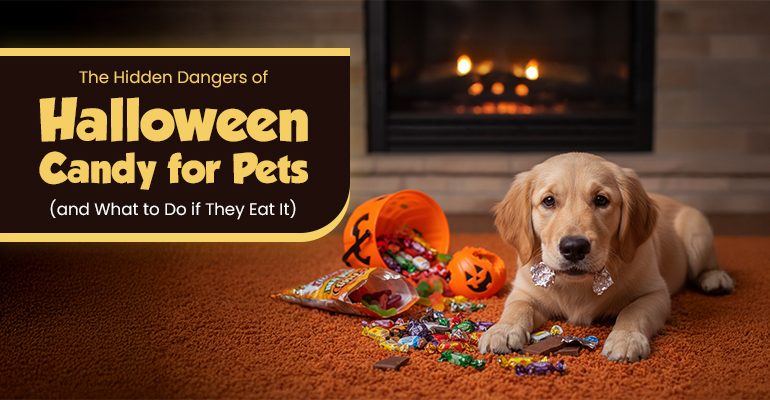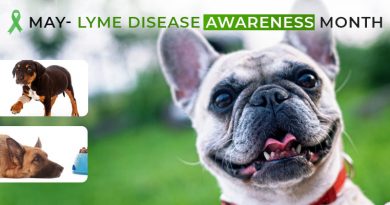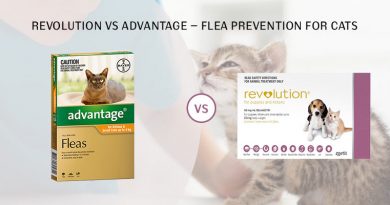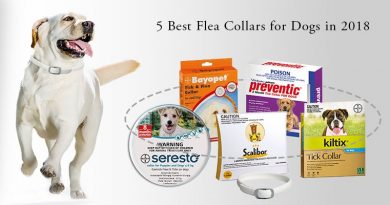The Hidden Dangers of Halloween Candy for Pets (and What to Do if They Eat It)
Halloween is always a fun time with costumes, spooky fun, and lots of drinks, snacks, and candies. While we enjoy these delightful treats, they are not particularly safe for our furry companions. Many popular Halloween candies are toxic to pets, and even small amounts can lead to emergency vet visits.
In this blog, we’ll uncover which of these hidden dangers you need to keep your pets away from and what to do if they eat them. Moreover, we’ll cover some valuable preventive measures to keep your pets safe this spooky season.
Let’s get started!
Dangerous Halloween Candies for Pets
In this segment, we’ll discuss the Halloween candies that are harmful to your pet.
Chocolate
Chocolate is one of the most well-known toxic Halloween treats for dogs and cats. It contains theobromine and caffeine, both of which are bad for pets. Dark and baking chocolate are especially dangerous due to their high concentration. You may notice symptoms such as vomiting, diarrhea, increased heart rate, tremors, and seizures if they’ve eaten chocolate.
Raisins/Chocolate-covered raisins
Raisins are extremely dangerous for pets, and even a tiny amount can make them severely ill or cause kidney failure. Thus, chocolate-covered raisins can double the trouble for your pet. Watch out for symptoms such as extreme thirst and urination, poor appetite, vomiting, and lethargy.
Hard Candies
Hard candies at the parties are another danger, as they present choking hazards. Moreover, they can also cause obstructions if multiple candies are stuck together. If the candies are sugar-free, they can be even more problematic, as they contain xylitol. This sugar alternative can result in a severe drop in blood sugar levels and can be fatal.
Sticky Candies and Gummies
Sticky sweets like caramels and gummies can get lodged in your pet’s teeth or throat. They can be a choking hazard and can also lead to serious digestive issues and intestinal blockages.
Lollipops
Lollipops combine sugary candy with a stick, and both of them are hazardous for your pet. The candy may contain harmful ingredients and can cause digestive issues. Plus, your pet may chew and swallow the stick, leading to choking or internal injury.
Candy Wrapper
Pets don’t unwrap their treats; they just gulp. So, along with candies, you need to be careful about the packaging and candy wrappers as well. Foil, plastic, and cellophane wrappers, if ingested, can cause life-threatening bowel obstructions.
What to Do if Your Pet Has Eaten Halloween Candy?
If you suspect your pet has consumed candy, here are the steps you need to follow:
- Stay calm and take prompt action.
- Identify what was eaten and how much.
- Call your veterinarian or a pet poison helpline immediately.
- Note down the symptoms to relay them to the vet.
- Do not induce vomiting unless instructed by a professional.
Preventive Measures
Here are some measures you can take to protect your pet from the dangers of Halloween candy:
- Keep all candy out of reach, including hidden stashes in bedrooms or purses.
- During the party, place candies, drinks, or other snacks on higher platforms out of their reach.
- Apart from candies, avoid leaving alcohol or caffeinated drinks unattended.
- Inform children and guests not to feed pets any treats.
- Make sure to dispose of wrappers securely.
- Create a quiet, candy-free zone for pets during Halloween festivities.
- Consider offering pet-safe treats so they don’t feel left out.
Parting Words
Halloween should be a treat and not a trick for everyone, including your pets. By understanding the dangers and taking simple precautions, you can ensure your furry friends stay safe and healthy while you enjoy the spooky fun. And always remember to call your vet for any kind of query because a few minutes of caution can save you from a lifetime of regret.
Also, know more about: How to Help Your Pet Handle Anxiety This Halloween Fest!




